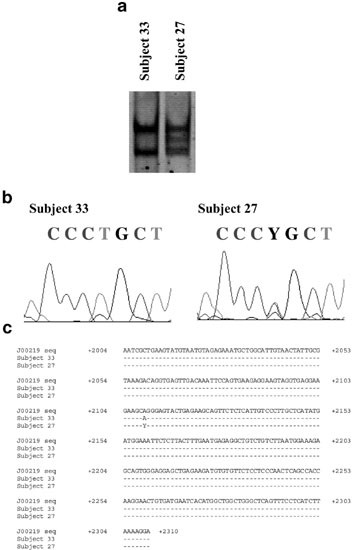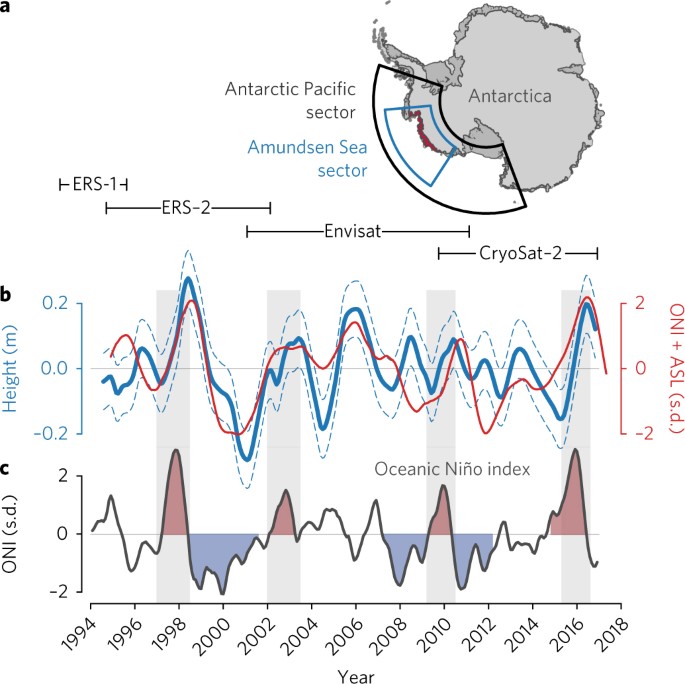
- Select a language for the TTS:
- UK English Female
- UK English Male
- US English Female
- US English Male
- Australian Female
- Australian Male
- Language selected: (auto detect) - EN
Play all audios:
ABSTRACT Over the past decade, accelerating rates of species extinction have prompted an increasing number of studies to reduce species diversity experimentally and examine how this alters
the efficiency by which communities capture resources and convert those into biomass1,2. So far, the generality of patterns and processes observed in individual studies have been the
subjects of considerable debate3,4,5,6,7. Here we present a formal meta-analysis of studies that have experimentally manipulated species diversity to examine how it affects the functioning
of numerous trophic groups in multiple types of ecosystem. We show that the average effect of decreasing species richness is to decrease the abundance or biomass of the focal trophic group,
leading to less complete depletion of resources used by that group. At the same time, analyses reveal that the standing stock of, and resource depletion by, the most species-rich polyculture
tends to be no different from that of the single most productive species used in an experiment. Of the known mechanisms that might explain these trends, results are most consistent with
what is called the ‘sampling effect’, which occurs when diverse communities are more likely to contain and become dominated by the most productive species. Whether this mechanism is
widespread in natural communities is currently controversial. Patterns we report are remarkably consistent for four different trophic groups (producers, herbivores, detritivores and
predators) and two major ecosystem types (aquatic and terrestrial). Collectively, our analyses suggest that the average species loss does indeed affect the functioning of a wide variety of
organisms and ecosystems, but the magnitude of these effects is ultimately determined by the identity of species that are going extinct. Access through your institution Buy or subscribe This
is a preview of subscription content, access via your institution ACCESS OPTIONS Access through your institution Subscribe to this journal Receive 51 print issues and online access $199.00
per year only $3.90 per issue Learn more Buy this article * Purchase on SpringerLink * Instant access to full article PDF Buy now Prices may be subject to local taxes which are calculated
during checkout ADDITIONAL ACCESS OPTIONS: * Log in * Learn about institutional subscriptions * Read our FAQs * Contact customer support SIMILAR CONTENT BEING VIEWED BY OTHERS SPECIES
RICHNESS IS MORE IMPORTANT FOR ECOSYSTEM FUNCTIONING THAN SPECIES TURNOVER ALONG AN ELEVATIONAL GRADIENT Article 20 September 2021 THE RESULTS OF BIODIVERSITY–ECOSYSTEM FUNCTIONING
EXPERIMENTS ARE REALISTIC Article 24 August 2020 PLANT DIVERSITY ENHANCES ECOSYSTEM MULTIFUNCTIONALITY VIA MULTITROPHIC DIVERSITY Article 29 August 2024 REFERENCES * Loreau, M. et al.
Biodiversity and ecosystem functioning: Current knowledge and future challenges. _Science_ 294, 804–808 (2001) Article ADS CAS Google Scholar * Chapin, F. S. et al. Biotic control over
the functioning of ecosystems. _Science_ 277, 500–504 (1997) Article CAS Google Scholar * Huston, M. A. Hidden treatments in ecological experiments: Re-evaluating the ecosystem function
of biodiversity. _Oecologia_ 110, 449–460 (1997) Article ADS Google Scholar * Schwartz, M. W. et al. Linking biodiversity to ecosystem function: Implications for conservation ecology.
_Oecologia_ 122, 297–305 (2000) Article ADS CAS Google Scholar * Schlapfer, F. & Schmid, B. Ecosystem effects of biodiversity: A classification of hypotheses and exploration of
empirical results. _Ecol. Appl._ 9, 893–912 (1999) Article Google Scholar * Hooper, D. U. et al. Effects of biodiversity on ecosystem functioning: A consensus of current knowledge. _Ecol.
Monogr._ 75, 3–35 (2005) Article Google Scholar * Srivastava, D. S. & Vellend, M. Biodiversity-ecosystem function research: Is it relevant to conservation?. _Annu. Rev. Ecol. Evol.
Syst._ 36, 267–294 (2006) Article Google Scholar * Sala, O. E. et al. Global biodiversity scenarios for the year 2100. _Science_ 287, 1770–1774 (2000) Article CAS Google Scholar *
Vitousek, P. M., Mooney, H. A., Lubchenco, J. & Melillo, J. M. Human domination of Earth’s ecosystems. _Science_ 277, 494–499 (1997) Article CAS Google Scholar * Pimm, S. L., Russell,
G. J., Gittleman, J. L. & Brooks, T. M. The future of biodiversity. _Science_ 269, 347–350 (1995) Article ADS CAS Google Scholar * Millennium Ecosystem Assessment. _Ecosystems and
Human Well-being: Biodiversity Synthesis_ (World Resources Institute, Washington DC, 2005) * Naeem, S., Thompson, L. J., Lawler, S. P., Lawton, J. H. & Woodfin, R. M. Declining
biodiversity can alter the performance of ecosystems. _Nature_ 368, 734–737 (1994) Article ADS Google Scholar * Tilman, D., Wedin, D. & Knops, J. Productivity and sustainability
influenced by biodiversity in grassland ecosystems. _Nature_ 379, 718–720 (1996) Article ADS CAS Google Scholar * Hector, A. et al. Plant diversity and productivity experiments in
European grasslands. _Science_ 286, 1123–1127 (1999) Article CAS Google Scholar * Wardle, D. A., Bonner, K. I. & Nicholson, K. S. Biodiversity and plant litter: Experimental evidence
which does not support the view that enhanced species richness improves ecosystem function. _Oikos_ 79, 247–258 (1997) Article Google Scholar * Downing, A. L. & Leibold, M. A.
Ecosystem consequences of species richness and composition in pond food webs. _Nature_ 416, 837–841 (2002) Article ADS CAS Google Scholar * Fridley, J. D. Resource availability dominates
and alters the relationship between species diversity and ecosystem productivity in experimental plant communities. _Oecologia_ 132, 271–277 (2002) Article ADS Google Scholar * Finke, D.
L. & Denno, R. F. Predator diversity dampens trophic cascades. _Nature_ 429, 407–410 (2004) Article ADS CAS Google Scholar * Petchey, O. L., McPhearson, P. T., Casey, T. M. &
Morin, P. J. Environmental warming alters food-web structure and ecosystem function. _Nature_ 402, 69–72 (1999) Article ADS CAS Google Scholar * Raffaelli, D. et al. in _Biodiversity and
Ecosystem Functioning: Synthesis and Perspectives_ (eds Loreau, M., Naeem, S. & Inchausti, P.) 147–154 (Oxford Univ. Press, Oxford, 2002) * Covich, A. P. et al. The role of biodiversity
in the functioning of freshwater and marine benthic ecosystems. _Bioscience_ 54, 767–775 (2004) Article Google Scholar * Emmerson, M. C., Solan, M., Emes, C., Paterson, D. M. &
Raffaelli, D. Consistent patterns and the idiosyncratic effects of biodiversity in marine ecosystems. _Nature_ 411, 73–77 (2001) Article ADS CAS Google Scholar * Duffy, J. E.
Biodiversity loss, trophic skew and ecosystem functioning. _Ecol. Lett._ 6, 680–687 (2003) Article Google Scholar * Hector, A., Bazeley-White, E., Loreau, M., Otway, S. & Schmid, B.
Overyielding in grassland communities: testing the sampling effect hypothesis with replicated biodiversity experiments. _Ecol. Lett._ 5, 502–511 (2002) Article Google Scholar * Loreau, M.
& Hector, A. Partitioning selection and complementarity in biodiversity experiments. _Nature_ 412, 72–76 (2001) Article ADS CAS Google Scholar * Hutchinson, G. E. Population
studies—animal ecology and demography—concluding remarks. _Cold Spring Harb. Symp. Quant. Biol._ 22, 415–427 (1957) Article Google Scholar * Gause, G. F. _The Struggle for Existence_
(Williams & Wilkins, Baltimore, Maryland, 1936) * Tilman, D., Lehman, D. & Thompson, K. Plant diversity and ecosystem productivity: Theoretical considerations. _Proc. Natl Acad. Sci.
USA_ 94, 1857–1861 (1997) Article ADS CAS Google Scholar * Cardinale, B. J., Ives, A. R. & Inchausti, P. Effects of species diversity on the primary productivity of ecosystems:
Extending our spatial and temporal scales of inference. _Oikos_ 104, 437–450 (2004) Article Google Scholar * Hedges, L. V., Gurevitch, J. & Curtis, P. S. The meta-analysis of response
ratios in experimental ecology. _Ecology_ 80, 1150–1156 (1999) Article Google Scholar Download references ACKNOWLEDGEMENTS We thank S. Gaines, H. Hillebrand, M. Huston, J. Hille
Ris-Lambers, J. Levine, J. Melack, B. Starzomski, D. Tilman and D. Wardle for comments that improved this manuscript. This work was supported by grants from the US National Science
Foundation and is a product of the BioMERGE diversity-synthesis network. AUTHOR INFORMATION AUTHORS AND AFFILIATIONS * Department of Ecology, Evolution and Marine Biology, University of
California at Santa Barbara, Santa Barbara, California, 93106, USA Bradley J. Cardinale * Department of Zoology, University of British Columbia, Vancouver, British Columbia, V6T 1Z4, Canada
Diane S. Srivastava * Virginia Institute of Marine Science, The College of William and Mary, Gloucester Point, Virginia, 23062, USA J. Emmett Duffy * Department of Biology, Duke University,
Durham, North Carolina, 27708, USA Justin P. Wright * Department of Zoology, Ohio Wesleyan University, Delaware, Ohio, 43015, USA Amy L. Downing * Institute of Integrative & Comparative
Biology, Faculty of Biological Sciences, University of Leeds, Leeds, LS2 9JT, UK Mahesh Sankaran * Comparative Biology, Faculty of Biological Sciences, University of Leeds, Leeds, LS2 9JT
Mahesh Sankaran * Department of Ecology, Evolution and Environmental Biology, Columbia University, New York, New York, 10027, USA Claire Jouseau Authors * Bradley J. Cardinale View author
publications You can also search for this author inPubMed Google Scholar * Diane S. Srivastava View author publications You can also search for this author inPubMed Google Scholar * J.
Emmett Duffy View author publications You can also search for this author inPubMed Google Scholar * Justin P. Wright View author publications You can also search for this author inPubMed
Google Scholar * Amy L. Downing View author publications You can also search for this author inPubMed Google Scholar * Mahesh Sankaran View author publications You can also search for this
author inPubMed Google Scholar * Claire Jouseau View author publications You can also search for this author inPubMed Google Scholar CORRESPONDING AUTHOR Correspondence to Bradley J.
Cardinale. ETHICS DECLARATIONS COMPETING INTERESTS Reprints and permissions information is available at www.nature.com/reprints. The authors declare no competing financial interests.
SUPPLEMENTARY INFORMATION SUPPLEMENTARY NOTES Summary of studies reviewed and selected for meta-analysis. (DOC 155 kb) SUPPLEMENTARY DATA Dataset used for meta-analysis. (XLS 175 kb) RIGHTS
AND PERMISSIONS Reprints and permissions ABOUT THIS ARTICLE CITE THIS ARTICLE Cardinale, B., Srivastava, D., Emmett Duffy, J. _et al._ Effects of biodiversity on the functioning of trophic
groups and ecosystems. _Nature_ 443, 989–992 (2006). https://doi.org/10.1038/nature05202 Download citation * Received: 08 July 2006 * Accepted: 05 September 2006 * Issue Date: 26 October
2006 * DOI: https://doi.org/10.1038/nature05202 SHARE THIS ARTICLE Anyone you share the following link with will be able to read this content: Get shareable link Sorry, a shareable link is
not currently available for this article. Copy to clipboard Provided by the Springer Nature SharedIt content-sharing initiative









